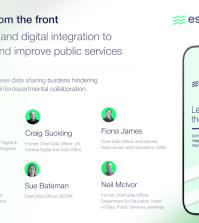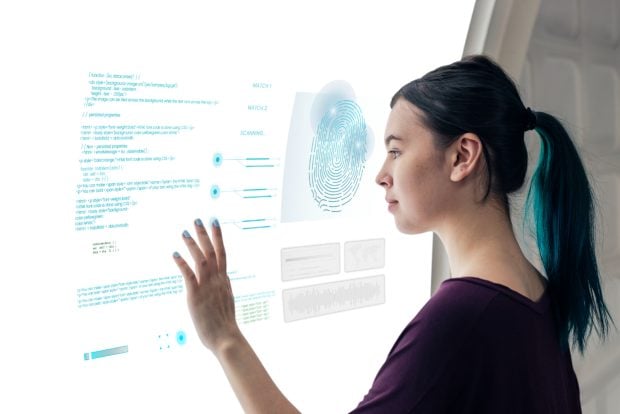Has one US state discovered the secret to successful government data sharing?

Data sharing in government is notoriously difficult. Due to vertical structures that hinder horizontal working, privacy concerns, and numerous other barriers, it is a nut that most organisations are yet to crack. But some have managed it. Could the North Carolina Government Data Analytics Center provide a data-sharing blueprint for both local and national governments in the US and beyond?
“Data sharing sounds like an antiquated phrase but unfortunately in government it’s still a pretty big hurdle to get organisations to share data with each other,” says John Correllus, who recently left his position as director of the Government Data Analytics Center (GDAC) to take up the role of principal industry consultant at analytics software specialist SAS.
However, that isn’t to say it can’t be done – as GDAC has proved. It has expanded from a small pilot project to the state’s dedicated, legislation-backed data and analytics centre responsible for gathering data from the public and private sector to create new intelligence that can be used by decision-makers to improve citizen services.
So, how has GDAC achieved what many are finding so difficult to do? And what are the lessons?
The concept for what would later become GDAC came about in 2007 as part of a data integration plan developed by the state controller’s office. “The plan was delivered and what typically happens unfortunately is that government plans go on a shelf and are never opened again,” Correllus, who was also North Carolina’s chief data officer and deputy state CIO, says.
This one, however, was different. North Carolina identified an immediate need to put the plan in motion. Investigations revealed that the murders of two university students, which garnered significant media attention at the time, may have been prevented had information about the offenders – who were known to numerous criminal justice bodies before they committed the crimes – been shared between the law enforcement agencies and the judicial system.
“Those murders brought to light how we needed our criminal justice information to be more integrated to provide a single view of an offender from various data systems,” Correllus says. This incentive led to a pilot, supported by legislation, which he says proved “hugely successful”. Called Criminal Justice Law Enforcement Automated Data Services – CJLEADS for short – the centralised database comprises comprehensive, up-to-date information about offenders and is now used by 25,000 criminal justice professionals across North Carolina.
“CJLEADS really caught the attention of policymakers and other executives,” says Correllus. “It showed them how we could operationalise our data assets and that by doing so you generate new intelligence which leads to better informed decision-making and better outcomes. It really showed the business value of a group within the state focused on enterprise data efforts.”
The successful implementation and impact of CJLEADS led the group behind it to direct data sharing and analytic capabilities toward enterprise fraud and compliance across government programmes – such as unemployment insurance and workers’ compensation insurance – and then to expand incrementally to other business areas.
As a result, in 2014, legislation was passed that moved the specialist data integration organisation behind CJLEADS – which had been named the Government Data Analytics Center – from the controller’s office to the state’s Department of Information Technology. This legislation granted it new powers, mandated it to fulfil additional requirements, and effectively directed the state’s agencies to work with it.
“The mission is to be a trusted partner for data sharing, and to integrate data across the enterprise to improve operational efficiencies, to support citizens through improved outcomes, and to improve government performance,” Correllus explains.
“Success bred more success,” he says, with integrated data and analytics now being used across all kinds of what he calls government “pillars” to support decision-making.
Indeed, when Correllus left GDAC in the autumn of 2021, the organisation had grown from 20 employees to around 60, charged with working on around 40 data programmes at any one time. As well as supporting criminal and anti-fraud and compliance efforts, GDAC brings together data from across government and runs the state-wide Health Information Exchange among other significant programmes.
The organisation has matured into what is effectively the state’s chief analytics office, according to Correllus. “That’s how it’s functioning. GDAC doesn’t do anything for itself – it’s trying to improve and attach itself to the strategic goals and objectives of each department.
“What it does so well is to look across the various departments and the various programmes and integrate data across silos because when we integrate data across lines of business, that’s when we get new intelligence. It’s about realising the longitudinal impact of our programmes – the collective wrapper we put around our services to citizens and businesses so that we replicate the successful ones and don’t replicate the ones that aren’t.”
Legislation-backed and privacy aware
But how easy – or difficult – would it be for another state, local or national government to replicate GDAC itself?
The ability to get legislation in place is, while integral to getting such an organisation up and running, not the key to getting it working effectively for its partners.
Correllus says the legislation underpinning GDAC effectively meant that agencies had to share their data when, in the beginning, a culture of sharing didn’t exist. “That being said, just having it in law isn’t something that forces people to do it successfully – it allows and requires agencies to share but it’s not an engagement approach,” he says. “The legislation underpins the data-sharing agreements but once this thing got going, the legislation was in the background – the focus is on GDAC delivering value to the agencies it works with.”
What fosters data sharing, he says, is delivering value. “Integrating data for shared goals and shared outcomes is the biggest catalyst for operationalising and sharing data.”
As for culture, Correllus says he has seen a shift from “this is my data, I own it, you can’t have it” to a scenario where government entities want to share their data but are nervous to do so due to privacy concerns.
At GDAC just as in most democratic government organisations, the feeling is that citizens have entrusted their data to government and that as such, “we must ensure privacy, that they’re not exposed, and that their information isn’t shared with people it shouldn’t be”, Correllus says.
However, there are opportunities even in environments where privacy policies are less mature, he says. “You may not be able to share record level detail but you may still be able to share data that’s valuable for planning and strategy purposes”.
While the fear of inadvertently infringing on citizens’ privacy – or engendering mistrust by pursuing data – is a legitimate reason to be cautious about data sharing, Correllus says strong data governance and effective technology can enable ethical, secure approaches to protecting the privacy and confidentiality of the data.
What shouldn’t get in the way of data sharing, he adds, are concerns about data quality.
“A lot of government data is administrative in nature. There’s no forethought in terms of collecting it for analysis – it’s there because someone enters a programme and then leaves it, and the data generated can be messy.
“It’s common for agencies to shy away from sharing their data because they feel it isn’t high quality but there’s a corny phrase I use – ‘there’s good data in bad data, and bad data in good data’ – you just have to identify what’s what and understand how it can be used.”
Whether or not they have been directly influenced by GDAC, similar data integration programmes are beginning to pop up in other US states. Indiana has developed its Management Performance Hub which hosts more than 180 datasets relevant to state government, for example, while InnovateOhio has established a data platform and data-sharing practices. As Correllus explains, other states have dedicated chief data offices, or officers, focused on facilitating data sharing, and cataloguing and governing data assets, and some of them have or are developing data-sharing agreements.
COVID-19 the catalyst – but progress must continue
It may be that in the coming months other local and national governments expediate their data-sharing plans as a result of lessons from the COVID-19 pandemic.
“The pandemic definitely highlighted the lack of data interoperability and I would say it supercharged data sharing, and that’s a good thing, but it was for specific purpose,” Correllus says. “What’s important now is that it continues.”
He believes that while a lot of the data sharing that has taken place over the last two years will “fall off” as the pandemic winds down, much of it will be sustained. As a result of coronavirus and the necessary response to it, governments now better recognise the need to invest in data systems “smartly” and to think about data ecosystems.
“We’re going to start to see opportunities around collecting data to help answer advanced policy questions,” he says. He gives the example of young people who have missed out on two years of in-person education, who aren’t in college and who haven’t entered the workforce. “What happened to them? How did the pandemic and the associated loss of learning affect their journey? There are going to be a whole slew of policy questions that can only be answered through data integration and analysis and there will be a focus on building ecosystems that enable that.”
He points out that data, in his view, is the most important aspect of digital transformation and a key consideration when reviewing both technical and business architectures.
“We need to look at practices and procedures across government that we can standardise through use of data models,” he says.
The expectation is that citizens’ interactions with government will be “extraordinarily streamlined” but, Correllus says, “we’re a way away from that right now”. What will be needed is for governments to get better information about their services more quickly and that, he says, can only happen “through use of data and analytics, through implementing machine learning techniques, and through digital transformation”.
Looking to the future, 10 years from now Correllus sees thriving data ecosystems becoming commonplace and intelligent automation helping to foster real-time decision-making through faster data processing and analytics results. And, though he sees elevated privacy concerns, he also believes there will be new and improved tools to help keep data secure.
One point he makes, though, is that “it’s kind of contradictory but we’re talking about privacy being ramped up and at the same time we’re talking about transparency being ramped up. There’s a fine line there. How do you be super transparent at the same time as being super cognizant of the privacy of your citizens?”
In the US specifically he sees federal and state governments looking at, and seriously considering implementing, GDPR-like policies. Quite what impact that would have on data sharing in the States isn’t yet clear.
But there is something of which Correllus is certain: “Within 10 years, analytics is going to be embedded in all our business practices and processes, and you won’t need to be a data scientist to do it. Data science processes will be automated – there are a lot of solutions out there already.”
Join SAS for a conversation on Bridging the data science talent gap in the public sector. The #SASchat will take place on Twitter on Friday 8 July 2022 at 3pm CET / 9am ET. Click here for more information.
This is a piece of partner content produced by Global Government Forum on behalf of SAS.

















